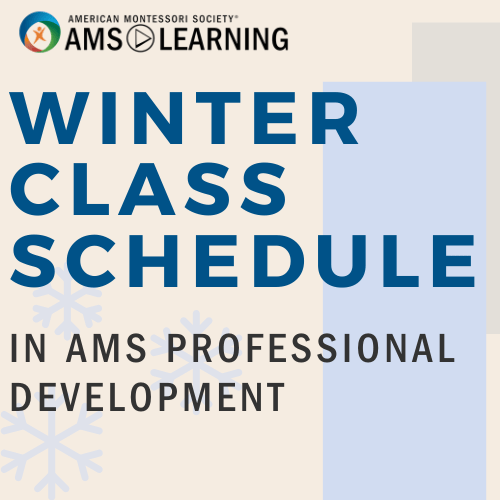Do Didactic Materials Belong in the Infant & Toddler Classroom? (From the Spring 2023 Issue of Montessori Life Magazine)
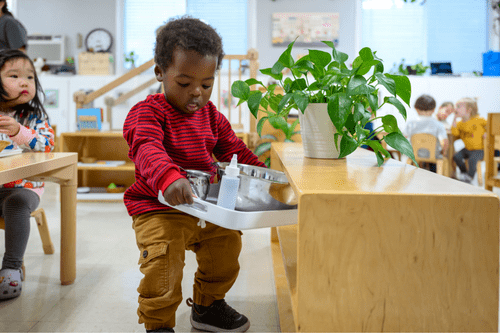
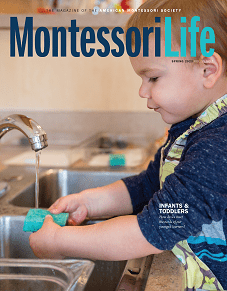
This article was featured in our 2023 Spring edition of Montessori Life magazine. Read full issues online (AMS members only).
AMS members also receive a print subscription to Montessori Life magazine. Become a member today to receive your own subscription plus access to the complete digital archives.
In our work, my fellow Infant & Toddler Montessori guides and I engage in a continual study of where each child is developmentally, and based on these observations, we create and re-create the environment to meet their needs. The Montessori Birth Centre in Rome grew out of the Montessori School for Infant Assistants, founded by Adele Costa Gnocchi, an early student of Montessori’s, who applied Montessori’s ideas to her courses geared for caregivers of children under the age of 3. The focus of these courses, and the Birth Centre, was not materials but observation. The advice was “Eyes to See With.” The primary focus for each “Assistant to Infancy” student was to study each child and create a suitable environment for them.
We view the environment as a live ingredient, to be adapted and improved right down to the smallest details so that it may best answer the children’s needs. . . . The main objective is to favour uninterrupted individual exploration which is the child’s natural state of activity. (Il Quaderno Montessori, 1993, p. 62)
Much of the work at the Birth Centre was practical living. For those of us who observe infants and toddlers, it is apparent that what is most attractive to the child in the unconscious absorbent mind, from birth to about age 3, is the real work in the home and the Montessori environment. Infants and toddlers absorb everything around them and begin to imitate; they revel in being able to do what their parents and teachers, and older children, are doing. This imitation is often the beginning of concentrated work. Setting the table, feeding themselves, cleaning the table, washing dishes, cleaning spills, blowing their nose, helping with laundry, watering the garden, washing the tables, cleaning the windows, recycling trash/food, pouring their milk, and preparing food—these activities are all totally engaging to the older infant and toddler. Maria Montessori (1946, p. 65) wrote of the value of this real Practical Life work:
When children are given the means to be active, not merely with toys to play with, but child-sized tools and materials so they can participate in the real life they see around them, their whole character changes. They show a strong desire to be independent and to do things by themselves, without any adult help. They want to become masters of their own minds, bodies, and environment.
We Infant & Toddler guides incorporate Practical Life activities into our environments to allow real work, concentration, and repetition. Children show pride in this work; they are proud of their ability to be like their parents and Montessori guides. Our time is spent modeling rather than teaching. This is an important difference between Montessori Infant & Toddler guides and traditional teachers.
In addition to their desire to engage in real Practical Life work, children from birth to age 3 are becoming aware of nature. Infant & Toddler guides take children outside to walk and explore, guided by Montessori’s words about the importance of nature:
There must, however, be provision for the child to have contact with Nature; to understand and appreciate the order, the harmony, and the beauty in nature; and also to master the natural laws which are basis of all sciences and art, so the child may better understand and participate in the marvelous thing which civilization creates. (Montessori, 1966, p. 105)
Sitting, lying, or crawling in the grass as an infant, or walking or playing in a field or in a wooded area or exploring a stream or a pond as a toddler: these are fascinating and engaging activities that support children’s needs for movement and exploration. Nature provides new sensory experiences and rich opportunities for language. Children delight in the wonder of nature and collect “treasures” on their outdoor adventures, which can be brought back to the environment and added to a nature basket.
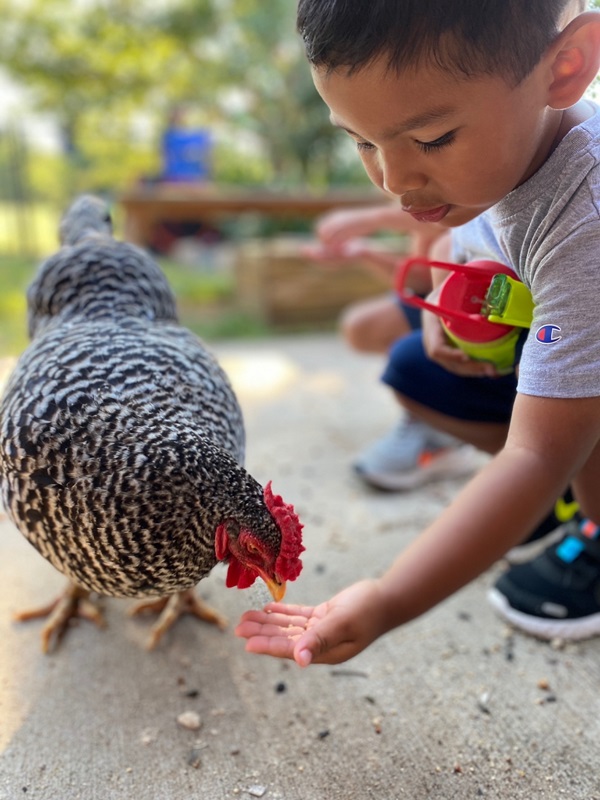
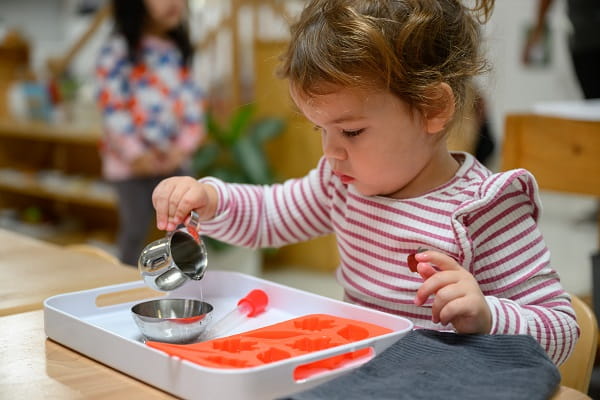
During my years as a Toddler guide, the children and I would begin many mornings with a walk outdoors or into the woods. I observed that these experiences in nature resulted in peace and calmness. After our morning walk, as the children returned to the environment, they would joyfully engage with the materials and activities that we had prepared for them. There was no need for circle time or advice to “choose some work.” The movement and exploration in outdoors was a natural segue into the same relaxed interaction with the indoor environment. In pleasant weather, extending the indoor environment outdoors supports independence and choice. There are some children, just as there are some adults, who prefer to work outdoors. Indoors and outdoors, Infant & Toddler guides support children’s need for movement, choice, and exploration.
As children begin transitioning from the unconscious absorbent mind to the conscious absorbent mind, we guides observe that we need to do more for them. We may also be absorbing expectations from parents or other Early Childhood educators, or may want to model what we have seen in other programs or what we experienced in our own early education. Since we work in a Montessori community, there are always spare Sensorial materials in the closets. It would be so easy to just bring these didactic materials (what some people call “real Montessori materials”) into our rooms for our children with the aim of “offering them more” or helping them transition to the next level. However, I believe it is important to explore why placing didactic materials in the Infant & Toddler environment may not be a good idea. My concern lies at the heart of Montessori education—respect.
Our coursework at the Infant & Toddler level involves hours of observation, child development, and environmental design. Our Infant & Toddler environments are very different from those of children in the conscious absorbent mind (Early Childhood environments). We spend hours and hours observing, changing the environment, and creating materials to meet the child’s changing interests and needs. Adult learners in an Infant & Toddler teacher education course are required to do a 24-hour “overview” of Early Childhood. This gives us an idea of where the children go from our environments, helps us in identifying when children are ready to transition, enhances our ability to talk to parents about what happens next, and offers us the opportunity to see the developmental progression of Montessori education.
In contrast, Montessori Early Childhood adult learners have approximately 35 – 40 hours of classroom time studying the Sensorial materials, an additional 15 or more hours of practice (alone and with other adults), and extensive practice with children during their practicum in preparation for an examination before certification. They spend similar amounts of time in Practical Life, Mathematics, and Language. The brief “overview” that Infant & Toddler adult learners receive pales in comparison to the hundreds of hours Early Childhood adult learners spend studying, practicing, and working with children using the didactic materials. While we Infant & Toddler educators focus on the skill of observation of the child’s development to meet the infant’s and toddler’s needs, Early Childhood educators have thoroughly engaged in the study of when, how, and in what sequence to present didactic materials to engage the child from 3 to 6. As Infant & Toddler guides, we welcome the respect we are given for the skills we have developed and the environments we create for children in the unconscious absorbent mind. I believe we must extend that same respect to Early Childhood educators for the skills they have developed though hours of study, practice, and observation of children in the conscious absorbent mind.
Among Infant & Toddler guides, the question of whether we can include didactic materials in our environments arises from time to time. There seems to be a difference in the response to this question. On visits to Infant & Toddler environments, I sometimes see the Knobbed Cylinders, the Pink Tower, the Broad Stairs, and the first Color Box. When I ask guides about why they chose these materials, they usually respond that the children need more and are attracted to these materials and love to work with them. I agree with each of these responses, but there are alternatives to the didactic materials. In an environment where children in the unconscious absorbent mind are allowed to explore with the materials, the didactic materials are often used inappropriately. Maria Montessori (2007, pp. 154–155) wrote about two types of misuse of materials:
If a teacher sees that material is being used in a way that will not attain its goal, . . . she should prevent him from continuing. The second type of error is due to a kind of ill will, to negligence on the part of the teacher, as for example when a child drags the whole stand of solid insets around as if it were a cart, or when he builds houses of the spools of coloured silk, or walks on the rods laid out in a row…. When material is used wrongly so as to create confusion, or for needs that it can’t satisfy, it is not really used at all. . . . This prevents the child from being able to concentrate and therefore from being able to grow and develop.
Our Early Childhood guides ask us not to use the didactic materials because when they are presenting them, the children who have used them before will say, “I’ve already done that.” They will be speaking truthfully, but they have not necessarily “done that” in the way these materials were intended to be used.
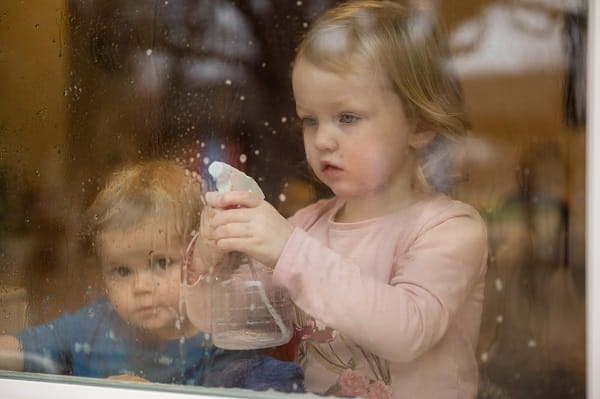
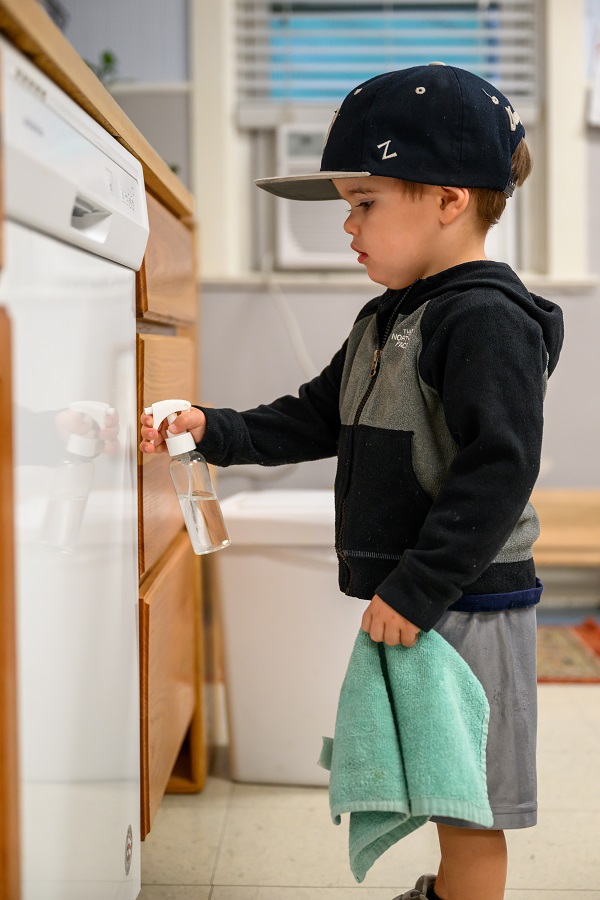
In albums presented in the first AMS Infant & Toddler course in the U.S., I saw a presentation in which every other cube of the Pink Tower was shown as a Toddler material. This did not come from the Birth Centre. In response to an interest in didactic materials for Toddlers, there is a “Montessori” catalog that offers the “Toddler Pink Tower” with 5 cubes, the “Toddler Brown Stairs” with 5 stairs, and the “Toddler Cylinder Block” with 4 cylinders. An Early Childhood guide, being true to Montessori, would consider this is a distortion of the purpose of these materials. The Sensorial materials help the child understand the decimal system—a system of ten. This is not possible with every other cube. Although these materials are pitched as being “authentic,” they are not true didactic materials.
As the child moves toward consciousness, their motor skills have become more refined, their perceptions have become more precise, they can follow longer cycles of activity, they use their language to solve problems, and their enjoyment of imitating the adult’s meaningful activities has become very strong. We observe that these children are ready for an Early Childhood environment. Montessori educator Judith Orion writes about this in her essay “Transitions”:
I am often queried about the optimal time to move children from the Infant Community to the Primary class. It is a question raised in schools, raised by parents, and questioned particularly by the Primary class directress. Over the years I have seen many children held too long in an Infant Community only to watch these “normalized” children regress into deviated states and then be deemed “not ready” for the move to the Primary class.
Transitions are often delayed by lack of space in Early Childhood classrooms, parent apprehension about entering an environment with many more children, or even the child not mastering toilet learning. Each concern can be resolved. This is worthy of another discussion. Despite delays in transitions to Early Childhood, we observe that these children need more challenging materials and experiences. I believe we can meet these needs without didactic materials.
We Infant & Toddler guides have created a large variety of materials and experiences for children. Some have not worked and have been discarded immediately, but others have been successful. The American Montessori Society offers a list: “Core Materials and Activities for Infant and Toddler Programs” (2015, amshq.org). There are no didactic materials on this list. The art of Infant & Toddler education relies on the keen observation of the guide and their creativity in making materials that meet each child’s needs. Where do we begin with the child who does need more before their transition to the Early Childhood classroom? I would suggest that, rather than offering didactic materials, guides start with Practical Life activities that include extra or more challenging steps. Here are a few examples:
- Several years ago, I saw Joan Rodriguez of Village Montessori in Miami present at an AMS conference. She had video of her individual banana bread–baking activity for older toddlers. We sent one of our Hope Montessori Infant-Toddler guides to Miami to see bread baking, and then we established it in our classrooms. The child does the entire process (except the baking): washes their hands, puts on the apron and chef’s hat, mixes the ingredients, pours the batter into the baking container, takes the bread to the kitchen for baking, washes the dishes, picks the bread up after baking, and serves it at lunch. This became such a popular activity that the younger children would stand and watch the older child do the entire process. Later they would imitate the same process, step for step. Hats off to Joan for her contribution.
- In the Hope Montessori Infant-Toddler environment, we create lots of dirty clothing and cloths. We set up a clothes-washing activity on a covered porch outside the classroom. The children would put on an apron, get water with a pitcher, add soap (as much as we put out), and use a scrub board to wash the cloths. There was a drying line, at which the children used clothespins to hang the cloths for drying. Then they emptied the water inside, dried up the table, hung their apron, and eventually folded the dried cloths.
-
We have lots of gardens outside each environment and around the building. In April or May, we set up a planting activity indoors. Children put on an apron and garden gloves, get a pot, fill it with soil with a garden shovel (kept in a bucket below the table), choose seeds from a packet with the picture of the vegetable, plant the seeds, water the seeds, and put the pot on a table, where they can continue to water it until it is warm enough to plant outside. Cleanup steps followed.
This activity leads to further gardening responsibilities: The children plant their seedlings outside when the soil has warmed sufficiently. Watering, mulching, pulling weeds, harvesting, preparation of food using the vegetables, and turning the garden for the winter with our compost follows. It is wonderful if you can unify what is going on inside your environment with what is happening in nature.
In conclusion, we are so fortunate to work in paradise, with children who are in love with the world. We can choose to avoid materials that are yet to come for the children and engage them in real practical work. Instead of “preparing the children” with didactic materials, we can engage them in work that offers sensory experiences, elicits extended concentration, allows care of the environment, leads to long cycles of activity, allows the practice of Grace and Courtesy, connects the classroom environment to nature, and provides language that flows from real work. Our creativity will be the “more” we can offer our children. Employing the craft we have worked so hard to develop, we will truly prepare our children for their Early Childhood environment.
References
American Montessori Society. (2015). “Starting a Montessori school: Materials.”
Il Quaderno Montessori. (1993). The Montessori Birth Centre Association in Rome (Italy): An idea, a story from 1947 to today (no. 39).
Montessori, M. (1946). Education for a new world. Kalakshetra Publications.
Montessori, M. (1966). What you should know about your child. Kalakshetra Publications.
Montessori, M. (2007). The discovery of the child. Montessori-Pierson Publishing Company.
Orion, J. A. (n.d.). “Transitions.” Montessori Guide.
About the Author
 |
David Shelton-Dodge, MEd (he/him), has spent over 40 years as a Montessori educator. He and his wife, Susie, are the 2023 AMS Living Legacies. Together, they established Hope Montessori Infant-Toddler Community, in 1982. David served as head of school for 38 years and as a Toddler guide for 26 of those years. Currently, he is the Infant-Toddler practicum director for Hope Montessori Educational Institute and conference coordinator. He is AMS-credentialed (Infant & Toddler). Contact him at david@hopemontessoritraining.com. |
Interested in writing a guest post for our blog? Let us know!
The opinions expressed in Montessori Life are those of the authors and do not necessarily represent the position of AMS.




